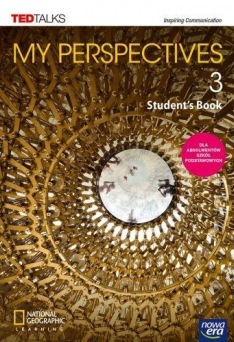II liceum
Język angielski
Lista zadań Strona 32
Strona 32
- Strona 4
- Strona 5
- Strona 6
- Strona 7
- Strona 8
- Strona 9
- Strona 10
- Strona 11
- Strona 13
- Strona 14
- Strona 15
- Strona 16
- Strona 17
- Strona 18
- Strona 19
- Strona 20
- Strona 21
- Strona 22
- Strona 23
- Strona 25
- Strona 27
- Strona 29
- Strona 30
- Strona 31
- Strona 34
- Strona 35
- Strona 36
- Strona 37
- Strona 38
- Strona 39
- Strona 40
- Strona 41
- Strona 43
- Strona 45
- Strona 47
- Strona 48
- Strona 49
- Strona 50
- Strona 51
- Strona 52
- Strona 53
- Strona 54
- Strona 55
- Strona 56
- Strona 57
- Strona 59
- Strona 61
- Strona 63
- Strona 64
- Strona 65
- Strona 66
- Strona 68
- Strona 69
- Strona 70
- Strona 71
- Strona 72
- Strona 73
- Strona 74
- Strona 75
- Strona 77
- Strona 79
- Strona 81
- Strona 82
- Strona 83
- Strona 84
- Strona 86
- Strona 87
- Strona 88
- Strona 89
- Strona 90
- Strona 91
- Strona 93
- Strona 95
- Strona 97
- Strona 98
- Strona 99
- Strona 100
- Strona 102
- Strona 103
- Strona 104
- Strona 105
- Strona 106
- Strona 107
- Strona 108
- Strona 109
- Strona 111
- Strona 113
- Strona 115
- Strona 116
- Strona 117
- Strona 118
- Strona 119
- Strona 120
- Strona 121
- Strona 122
- Strona 123
- Strona 124
- Strona 125
- Strona 127
- Strona 129
- Strona 131
- Strona 132
- Strona 133
- Strona 134
- Strona 135
- Strona 136
- Strona 137
- Strona 138
- Strona 139
- Strona 140
- Strona 141
- Strona 142
- Strona 143
- Strona 145
- Strona 147
- Strona 148
- Strona 149
1
Work in pairs. There is a group of students from Asia coming to your school and you will spend a few days with them. Discuss the following aspects:attractions to show themquestions to ask about their culturethe main information about your schoollanguages to use
2
2 Read the article. Match the headings (a–f) with the paragraphs (1-5). There is one heading you do not need.a Let's get togetherb A two-way thingc Body languaged Communication stylese Communicating without words.f Accurate opinions?
3
Read the article again. Choose the correct option. 1 What was the aim of the experiment?a to compare Moroccan and Chinese communication skills.b to prove that some nations are unable to understand each other.c to understand interactions between people of different cultures speaking different languages.2 What was Fatima's general opinion about Americans. before she met them?a She couldn't imagine what they might be like at all. b She had some stereotypical ideas about Americans, which didn't prove correct.c She knew what kind of people she was going to meet, so nothing surprised her.3 Why was Hyan Yu annoyed?a Because Eleni wasn't listening to him.b Because the way she spoke was hard for him to understand.C Because he misunderstood some of her non-verbal signals.4 Which group was the most direct in their interactions?a the Americansb the Chinesec the Moroccans5 What does the author suggest as a result of the experiment?a The students learnt that you can communicate with anyone you wish if you only want to.b The students learnt that it is easier to communicate if you understand intercultural differences and body language.c The students understood that the most valuable communication is only possible within one culture.
4
4 Match the words from the article (1-6) withthe definitions (a-f).1 urgent (line 11) 2 background (line 16) 3 stereotype (line 24) 4 fluent (line 30) 5 direct (line 49)6 passionately (line 52)a the culture and family someone comes from b set ideas about people or nationalities, often not true. c with emotiond important, high-priority e clear and honest f able to speak a foreign language well
5
The author uses direct speech in the article. Find four quotes. Why is direct speech used?
6
Match the quotes in the article with the points (1–4). It is important to:1 be aware of your own culture and be able to explain it. 2 understand why miscommunication happens.3 recognise how all types of communication can help understanding.4 be curious about other cultures.
7
Add the correct prefixes to make the adjectives negative.1 ...patient2 …aware3 …direct4 ...formal5 ...personal6 …regular7 ...possible8 ...relevant9 …true
8
Choose the correct option to complete each sentence.1 This intercultural experiment was quite usual / unusual.2 The Americans were surprised at how personal / impersonal and friendly the Moroccans were.3 The Moroccans realised their ideas about stereotypes were true / untrue.4 Eleni was aware/ unaware she was annoying Hyan Yu.
9
Work in groups. Discuss the questions.1 Does 'international' mean the same as 'intercultural'? What are the differences?2 What are the best ways to increase intercultural understanding between people from different countries? Which is the most effective?
